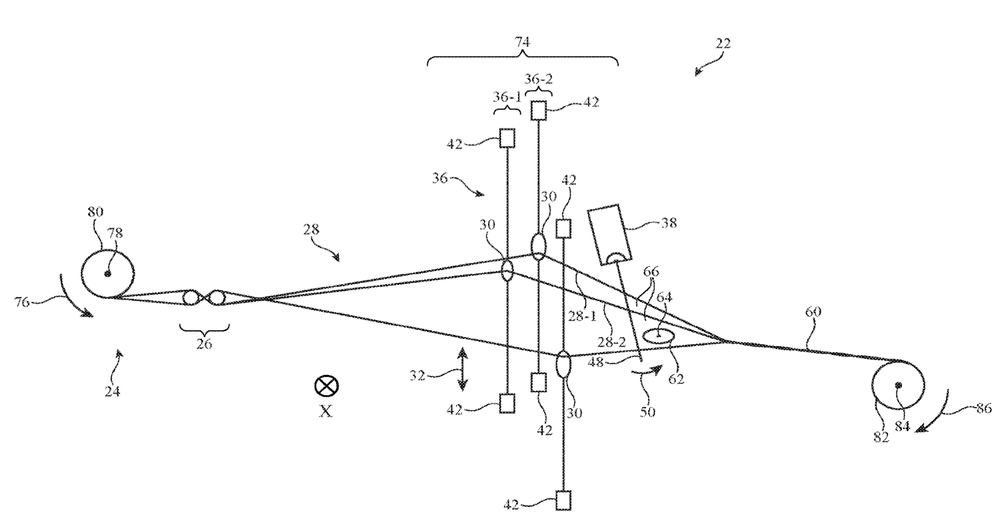Apple has been granted a patent for “woven fabric with conductive paths” and a weaving system for producing it. This seems to hint at “smart clothing.”
In the patent data, the tech giant says it would be great to form electrical devices, enclosures, and other items from fabric that contains strands of insulating material and strands of conductive material. However, challenges may arise when forming conductive structures from conductive strands in a fabric.
If care isn’t taken, a conductive strand in a signal path will be inadvertently shorted out. Apple wants to be able to provide improved techniques for forming conductive structures in fabric-based items.

This could open up several interesting possibilities. Tomorrow’s super-powered clothing might include garments that can recharge your smartphone and more. For instance, electronics could get recharged in the future simply by plugging them into your outerwear. Australian researchers have been working on clothing that can harvest energy from a person.
What’s more, underwear and sports uniforms could go weeks without washing thanks to self-cleaning fabrics developed by scientists working for the U.S. Air Force. (Of course, I’m not sure that I’d want to wear unwashed underwear for weeks at a time, but maybe that’s just me.)
Imagine an Apple-branded jacket that could power your iPhone. Or an Apple logo-ed running shirt that would match with your Nike + Apple kit and fight sweat stains. You’ve got Fruit of the Loom undies; why not Apple undies? Why not iWear?
Here’s the summary of the invention: “Weaving equipment may include warp strand positioning equipment that positions warp strands and weft strand positioning equipment that inserts weft strands among the warp strands to form fabric. The fabric may include insulating strands and conductive strands. Conductive strands may run orthogonal to each other and may cross at open circuit and short circuit intersections.
“The fabric may be formed using pairs of interwoven warp and weft strands. Conductive warp and weft strands may be interposed within the pairs of strands. The fabric may be a single layer fabric or may contain two or more layers. Stacked warp strands may be formed between pairs of adjacent insulating warp strands. The stacked warp strands may include insulating and conductive strands. Touch sensors and other components may include conductive structures that are formed from the conductive strands in the fabric.”
